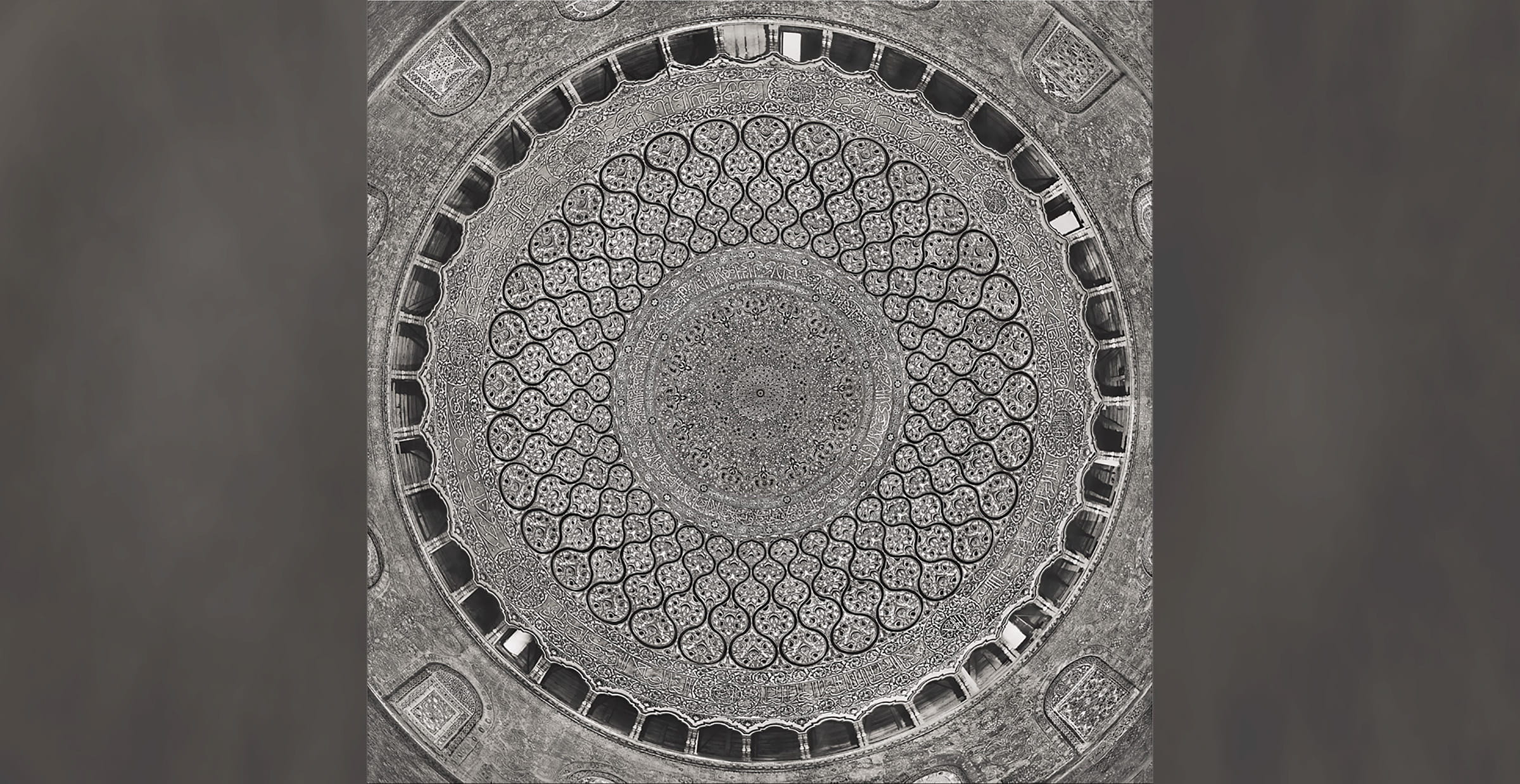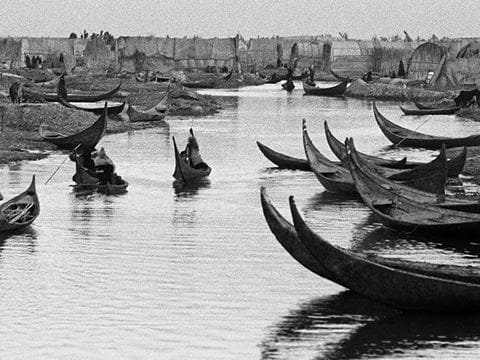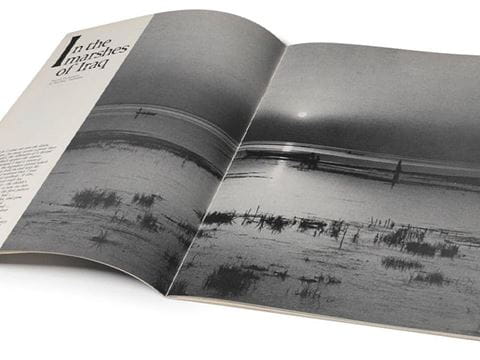
FirstLook: Qubbat al-Sakhra, ca. early 20th century
Photo restorer and artist Kelvin Brown stitched together scans from stereoscopic negatives bringing renewed clarity to the Qubbat al-Sakhra (Dome of the Rock).
Considered one of the greatest achievements of early Islamic architects, craftsmen and artists, the magnificent interior of the Qubbat al-Sakhra (Dome of the Rock) was built between 688 and 691 ce on Jerusalem’s Haram al-Sharif by order of Umayyad Caliph Abd al-Malik. Its intricate patterns reflect Hellenic, Roman, Byzantine and Sassanid influences, together with bands and medallions of Arabic calligraphy.
To create this unique symmetrical image of the hemispheric ceiling dome, photo restorer and artist Kelvin Bown painstakingly stitched together nine digital scans made from stereoscopic negatives originally taken between 1898 and 1920 by photographers commissioned by the American Colony of Jerusalem.
Produced as a limited edition print, this is one of many historical images of the Middle East that Bown has restored using modern techniques. The results bring renewed clarity, depth, detail and presence to early photographs, illuminating aspects of past ways of life that express the beauty, harmony, diversity and sustainability of the region.
See more of Bown's work at www.reawakeningthepast.com.
To create this unique symmetrical image of the hemispheric ceiling dome, photo restorer and artist Kelvin Bown painstakingly stitched together nine digital scans made from stereoscopic negatives originally taken between 1898 and 1920 by photographers commissioned by the American Colony of Jerusalem.
Produced as a limited edition print, this is one of many historical images of the Middle East that Bown has restored using modern techniques. The results bring renewed clarity, depth, detail and presence to early photographs, illuminating aspects of past ways of life that express the beauty, harmony, diversity and sustainability of the region.
See more of Bown's work at www.reawakeningthepast.com.
You may also be interested in...

Orion Through a 3D-Printed Telescope
Arts
With his homemade telescope, Astrophotographer Zubuyer Kaolin brings the Orion Nebula close to home.
The Lost World Of Southern Iraq's Marsh Arabs
History
Arts
In late 1967, photographer Tor Eigoland traveled for more than: a month, mostly by canoe, among the countless villages of southern Iraq's vast marshes. Now, 45 years later, writer Anthony Sattin calls his photographs a "rare and ethnographic record of a lost world. They bring us back to a time and place where people lived in harmony with their environment and respected the balance the natural world needs to thrive.'
Spotlight on Photography: Discover the Marshes of Iraq in a Visual Story by Wilfred Thesiger
Arts
History
“In the Marshes of Iraq” — November/December 1966